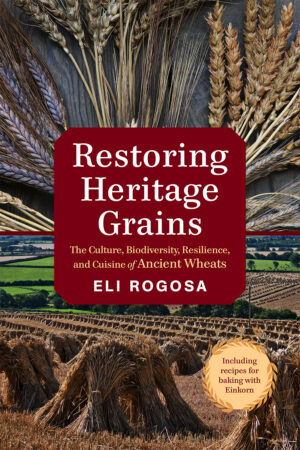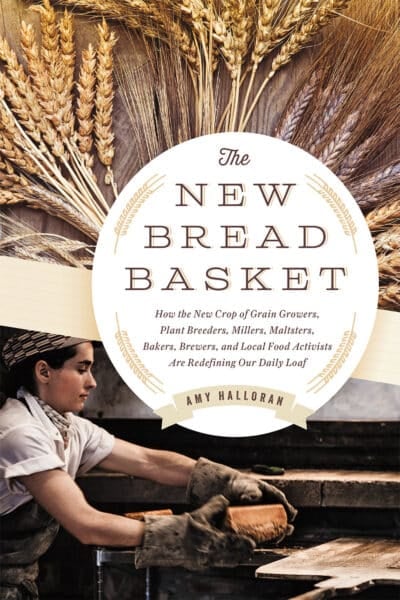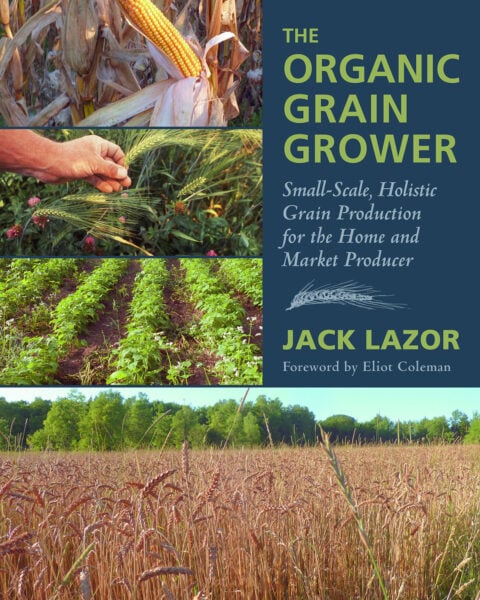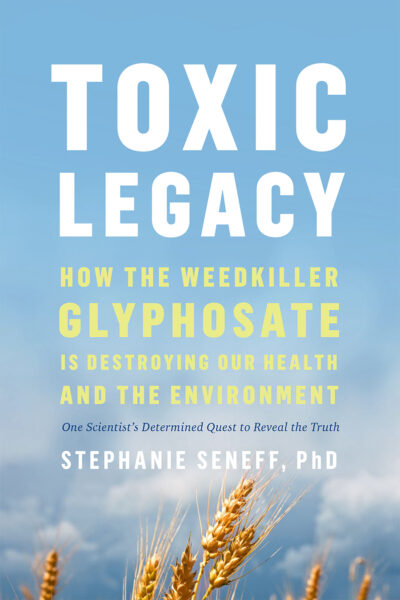Why Modern Wheat Is Making Us Sick
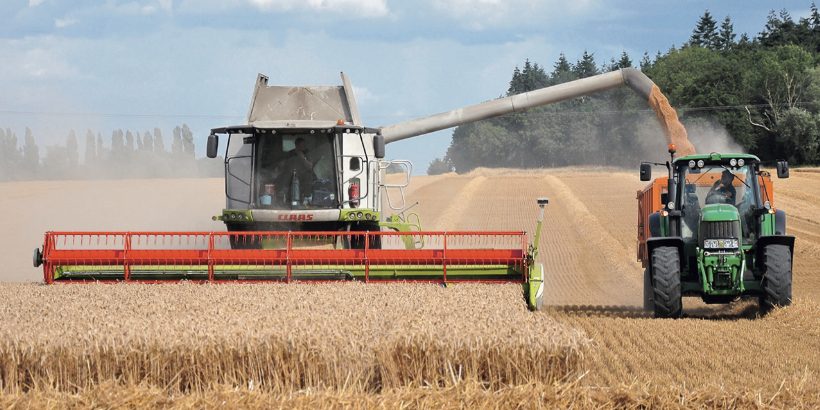
Why is modern wheat making us sick? That’s the question posed by author Eli Rogosa in her new book Restoring Heritage Grains.
Wheat is the most widely grown crop on our planet, yet industrial breeders have transformed this ancient staff of life into a commodity of yield and profit—witness the increase in gluten intolerance and ‘wheat belly’. Modern wheat depends on synthetic fertilizer and herbicides that damage our health, land, water, and environment. Fortunately, heritage ‘landrace’ wheats that evolved over millennia in the organic fields of traditional farms do not need bio-chemical intervention to yield bountifully, are gluten-safe, have rich flavor and high nutrition. Yet the robust, majestic wheats that nourished our ancestors are on the verge of extinction.
The following excerpt is from Restoring Heritage Grains by Eli Rogosa. It has been adapted for the web.
I am allergic to modern wheat. I suffered miserably from bloating, malabsorption, and indigestion for many years. No doctor could help me. Yet when I removed wheat from my diet, the symptoms vanished. My vitality returned with the added bonus of pounds shed. When I eat einkorn, I have no adverse reactions. Thus I have embarked on the journey to understand why. I am deeply disappointed in the wheat industry for ignoring—even refuting—the reports of the rise in gluten allergies.
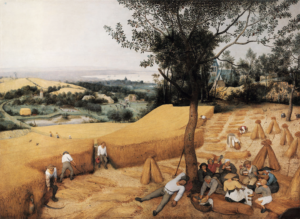
The Harvesters by Pieter Bruegel the Elder, 1565. Five-foot-tall wheat in 1565. Heritage wheats are tall with deep root systems that evolved in organic soils over millennia. Courtesy of the Metropolitan Museum of Art, New York City.
The rise in gluten allergies is real. Gluten allergies are increasing at epidemic proportions. In children the rate has skyrocketed fourfold in recent decades.1 The National Institutes of Health convened its first conference on celiac disease only in 2004, concluding that the condition is “widely unrecognized” and “greatly under diagnosed.”2 In other words, most individuals who suffer allergies to gluten are not diagnosed and suffer needlessly with symptoms ranging from poor nutrient absorption and discomfort to unexplained weight gain and bloating. Sensitivity to gluten affects from 1 to 6 percent of the population today; however, most gluten allergies are not diagnosed. A recent study compared frozen serum samples collected between 1948 and 1952 to serum samples collected at the time of analysis.3 After verifying the stability of IgA antibodies in the old samples, the investigators concluded that gluten allergies and celiac disease are at least four times more prevalent today than they were sixty years ago.
Celiac disease is a gastrointestinal malabsorptive disorder resulting from the ingestion of gluten. Allergic responses to gluten are highly variable and can include inflammation of the intestinal mucosa, which may result in atrophy of intestinal villi; malabsorption of nutrients; and a variety of clinical manifestations that can include diarrhea, abdominal cramping, pain, and distension. Untreated celiac disease and gluten allergies may lead to vitamin and mineral deficiencies, osteoporosis, and other systemic problems.
Celiac disease and a gluten allergy are two separate responses. The ingestion of gluten may lead to an allergy or celiac disease in susceptible individuals. Celiac disease is gluten intolerance that causes inflammation of the small intestinal mucosa. There are a range of gluten allergies and intolerances. Allergies occur through a pathway in which IgE antibodies cause different symptoms compared with intolerance. Different epitopes—the part of an antigen recognized by the immune system antibodies, B cells or T cells—are involved in allergy and celiac disease. Gluten sensitivity has been discovered only recently, and the pathway is still not well understood. The only treatment for celiac disease is a gluten-free diet.4
For years, Eric Lubrano5 wondered what he was suffering from.
I went to dermatologists for my skin problems. They offered me one skin cream, then another. I went to doctors for my stomach pains and poor digestion. Nothing helped. Finally after years of mysterious symptoms, I went to an allergist who gave me tests. I was diagnosed with gluten intolerance. Overnight, I changed the way I eat. I completely altered my diet to remove all bread and gluten products. It was a new life! My digestion improved. I found incredible energy, lost weight, no more breathing problems. My skin became clear and stopped hurting. I have rediscovered my body and my vitality.
Modern Wheat Is Less Nutritious
Mineral content in modern wheat cultivars has significantly decreased, including copper, iron, magnesium, manganese, phosphorus, selenium, and zinc. High levels of these nutrients can be found in landraces and old low-yielding varieties. Because wheat landraces have been evolved in environments with low nutrient availability, they represent a source of variation for selection of varieties adapted to cropping systems with low fertilizer input. Compared to the cost associated with the formation of new roots, arbuscular mycorrhizae may considerably increase the active absorbing root surface with minor cost to the wheat plant, thus enhancing the uptake of phosphorus, in particular, and other macro- and micro-nutrients.6
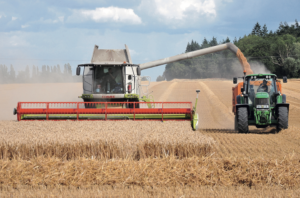
One-foot-tall wheat in 2000. Dwarfed, woody modern wheat hybrids are bred dependent on agrochemicals to survive, and have about 500 percent less leaf surface area than heritage wheat. Courtesy of Martin Pettitt.
Selection for high yield has caused a decrease in protein and mineral content and a loss of nutrition and flavor. Although there is an increase in the yield in high-input chemical systems, yield decreases in low-input organic systems. Shorter plants cannot compete with weeds. Stubby roots have lower nutrient uptake capacity. Weakened plants are bred with dependence on agrochemical protectants to survive. In pure line varieties diseases spread epidemically when all plants are the same. But this isn’t the case if there is diversity within the population, because then there are varying resistances in the field.
The modern dependence on agrochemicals contributes to climate change by nitrogen leaching, greenhouse gas emissions, and pesticides. Although modern wheat varieties may have high yields in agrochemical systems, they have inferior baking quality and mineral content. To improve yields in organic wheat production, increasing diversity with wide spacing in organic soil is more important than introducing new pure line varieties.
The Broadbalk Wheat Experiment7, spanning more than a century, has documented the decline in the nutrition of modern wheat. Since 1843, generations of investigators have grown wheat in parallel plots. Each year the harvest was tested for nutritional content. The findings are alarming. Although yield suddenly increased in 1968 when dwarf wheats were introduced, the nutritional value plummeted 18 to 29 percent in mineral content of zinc, iron, copper, magnesium, phosphorus, manganese, sulfur, and calcium. We are eating an empty harvest, craving more calories to get the basic nutrition we need.
Less Is More
In a study conducted in the Czech Republic, landraces and old cultivars were shown to have a higher content of protein than modern wheats. An increase in grain yield tends to cause a decrease in protein content.8 Comparing modern to older varieties, the modern ones have a small, 10 to 15 percent, improvement in the yield/protein continuum, over 150 years of breeding. The great advantage of modern varieties is that under high nitrogen they do not lodge.
Monocrop or Polyculture Diet
The Green Revolution has changed dietary habits. The comparison between traditional systems of agriculture and Green Revolution agriculture often neglects the full picture. Green Revolution agriculture produces monocultures of cereal grains, while traditional agriculture incorporates nutritionally balanced polycultures of grain, legumes, and vegetables. Monocrops of modern wheat have replaced the traditional polyculture of wheat, legumes, and vegetables. Although fewer people die from starvation, more are affected by malnutrition such as iron or vitamin deficiencies. Modern wheat monocultures are often used for export or feed for animals. In contrast, emmer and einkorn are exceptionally high in health-promoting phytonutrients and antioxidants. Einkorn has high levels of lutein and beta-carotenes. Lutein, an antioxidant, reduces the risk of age-related macular degeneration (AMD), the leading cause of vision loss among older Americans, and provides protection against heart disease and cancer.9 In North America, the daily intake of lutein is far below the recommended level and is declining due to a decrease in the consumption of the dark green vegetables that are its main source.
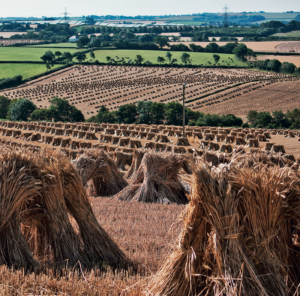
Traditionally, heritage wheat was cut about two weeks before full maturity, then dried down in the field in stooks (piles of sheaves) to cure and dry for a softer, more digestible bran and richer flavor. Courtesy of Mark Robinson.
Celiac Stimulatory Epitopes
The worldwide rise in celiac disease occurred at the exact same time as the introduction of Green Revolution dwarfed wheat. Dr. Hetty van den Broeck has long studied wheat and the gluten proteins that are responsible for celiac disease. Dr. van den Broeck is part of a research group in Holland that compared gluten proteins in modern wheats and in landrace wheats grown a century ago. The presence of the celiac disease stimulatory culprit, the Glia-α9 epitope, is alarmingly higher in modern wheat. Dr. van den Broeck’s extensive analysis of scores of modern and heritage wheats conclusively proves that modern wheat is making us sick. Modern wheat breeding has increased in the protein parts that cause celiac disease, known as epitopes.10 Norman Borlaug, the Nobel Prize–winning wheat breeder, not only introduced higher-yielding wheat but inadvertently created a high-gluten wheat that humans have not evolved to digest. Modern wheat is making us sick.11
According to Dr. van den Broeck:
The immune system is stimulated by gluten proteins. Once the system is triggered, it alters the mucosa of the small intestine, which flattens gradually causing symptoms of diarrhea, malnutrition, and malabsorption of nutrients. Not all celiac patients have flattened mucosa. Celiac can occur without flattened mucosa, which is then called latent celiac disease. People get sick. Each patient is different. Some get sick at the sight of a morsel of bread, so to speak, whereas others may eat a pizza a week without major symptoms, or with the consequences they are able to manage.12
The hidden gluten in our diets is a serious problem. “Modern gluten is not only in bread, but it is hidden in many food products from soups, sauces, meat products, potato chips, candies, ice creams, even in medicines and vitamin supplements, because it has useful adhesive properties for processed foods. For example, gluten is added to potato chips to adhere flavors.”
Dr. van den Broeck is trying to find solutions by identifying which species and varieties of wheat, ancient or modern, do not cause an allergic response:
We are looking for wheat varieties that are low in celiac disease epitopes, so that they can be used by breeders to create new varieties of wheat with safer gluten for consumers. It is possible to reduce the symptoms, but also the frequency of celiac disease by identifying wheat with less toxic gluten.13
For more about Eli Rogosa and her thoughts on modern wheat, check out this short film clip from Open Sesame: The Story of Seeds.
Modern Wheat Makes Us Sick from Organik Media on Vimeo.
Notes
- Ivarsson et al., “Epidemic of Coeliac Disease in Swedish Children,” Acta Paediatrica 89, no. 2 (February 2000): 165–171, http://www .ncbi.nlm.nih.gov/pubmed/10709885; and P. Laurin et al., “Increasing Prevalence of Coeliac Disease in Swedish Children: Influence of Feeding Recommendations, Serological Screening and Small Intestinal Biopsy Activity,” Scandinavian Journal of Gastroenterology 39, no. 10 (October 2004): 946–952, http://www.ncbi.nlm.nih.gov/pubmed/15513333.
- “NIH Consensus Development Conference on Celiac Disease,” NIH Consensus Development Program, June 28–30, 2004. https:// consensus.nih.gov/2004/2004CeliacDisease118html.htm.
- Rubio-Tapia et al., “Increased Prevalence and Mortality in Undiagnosed Celiac Disease,” Gastroenterology 137, no. 1 (July 2009): 88–93, http://www.ncbi.nlm.nih.gov/pubmed/19362553; and S. Lohi et al., “Increasing Prevalence of Coeliac Disease Over Time,” Alimentary Pharmacology & Therapeutics 26, no. 9 (November 2007): 1,217–1,225, http://www.ncbi.nlm.nih.gov/pubmed/17944736
- Hetty van den Broeck, communication with the author.
- A composite characterization.
- Abdullah A. Jaradat, “Wheat Landraces: A Mini Review,” Emirates Journal of Food and Agriculture 25, no. 1 (2013): 20–29, http://www.scopemed.org/?jft=137&ft=15376-43076-1-PB.
- S. Fan et al., “Evidence of Decreasing Mineral Density in Wheat Grain Over the Last 160 Years,” Journal of Trace Elements in Medicine and Biology 22, no. 4 (2008): 315–324, http://www.ncbi.nlm.nih.gov /pubmed/19013359.
- Dotlačil et al., “How Can Wheat Landraces Contribute to Present Breeding?,” Czech Journal of Genetic Plant Breeding 46 (2010): S70–S74, http://agriculturejournals.cz/publicFiles/18055.pdf.
- Lutein may reverse macular degeneration.
- Hetty C. van den Broeck et al., “Presence of celiac disease epitopes in modern and old hexaploid wheat varieties: wheat breeding may have contributed to increased prevalence of celiac disease,” Theoretical and Applied Genetics 121 (2010): 1,527–1,539, https:// www.ncbi.nlm.nih.gov/pmc/articles/PMC2963738/pdf/122_2010 _Article_1408.pdf.
- A. Sapone et al., “Spectrum of Gluten-Related Disorders:
Consensus on New Nomenclature and Classification,” BMC Medicine 10, no. 13 (7 February 2012), http://www.ncbi.nlm.nih.gov/pubmed /22313950. - Personal correspondence.
- Hetty C. van den Broeck et al., “Presence of celiac disease epitopes in modern and old hexaploid wheat varieties: wheat breeding may have contributed to increased prevalence of celiac disease,” Theoretical and Applied Genetics 121 (2010): 1,527–1,539, https:// www.ncbi.nlm.nih.gov/pmc/articles/PMC2963738/pdf/122_2010 _Article_1408.pdf.
Recommended Reads
Recent Articles
Oh, honeysuckle…how we love thee. If only there was a way to capture the sweet essence of this plant so we could enjoy it more than just in passing. Luckily, foraging and some preparation can help make that happen! Here’s a springtime recipe that tastes exactly like honeysuckle smells. The following excerpt is from Forage,…
Read MoreWant to see your crops thrive this upcoming growing season? The key is in soil fertility and health. Spend time maintaining your soil’s health to guarantee bigger and better crops come harvest time! The following is an excerpt from No-Till Intensive Vegetable Culture by Bryan O’Hara. It has been adapted for the web. What Is Soil Fertility?…
Read MoreIntroducing…your new favorite brunch dish! This whole broccoli frittata is packed with fresh, wildcrafted flavors that are bound to help you start your day off on the right foot. The following is an excerpt from The Forager Chef’s Book of Flora by Alan Bergo. It has been adapted for the web. RECIPE: Whole Broccoli Frittata…
Read MoreMany know the effects of catnip on our feline friends, but few realize that catnip has medicinal effects for humans. From stomach aches to reducing fevers, catnip is a versatile herb with many benefits. The next time you grow this plant for your cat you may end up taking a few cuttings for yourself! The…
Read MoreIt’s time to take control of your seeds and become a plant breeder! Saving your seed allows you to grow and best traditional & regional varieties, and develop more of your own. The following excerpt is from Breed Your Own Vegetable Varieties by Carol Deppe. It has been adapted for the web. Becoming A Plant…
Read More

